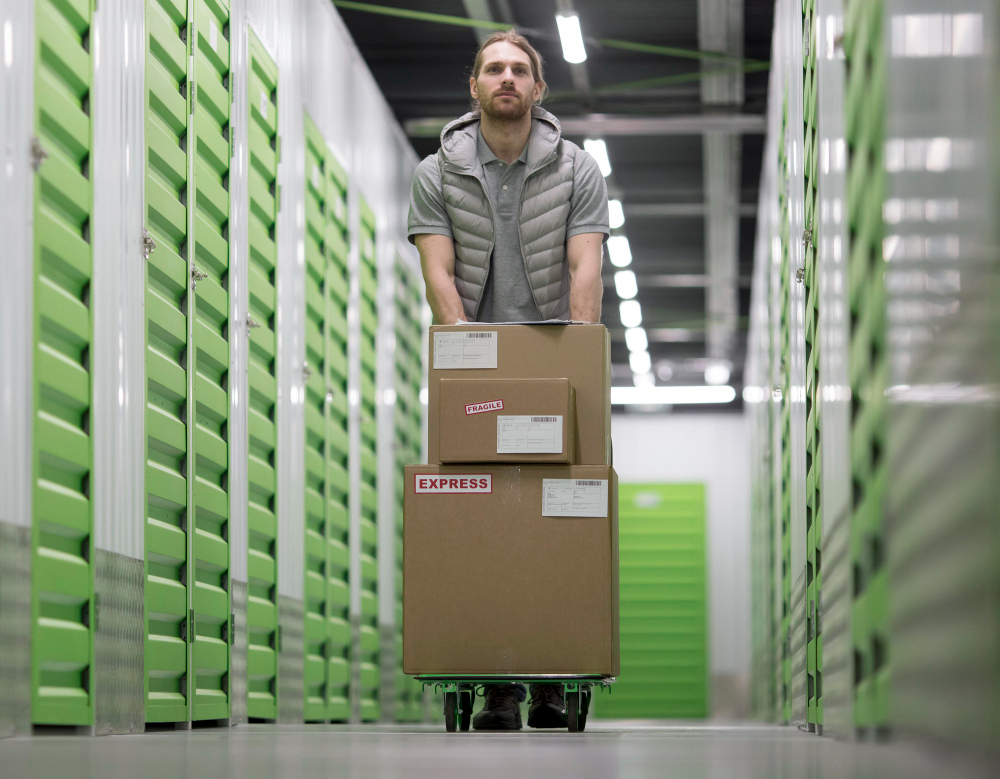- T-Shirts & Merchandise
- Flyer Design
- Brochure Design
- Poster Design
- Catalog Design
- Menu Design
- Invitation Design
Print Design Mastery: The Art of Freelance Services
Table of Contents
- Introduction to Print Design Freelance Services
- Key Elements of Print Design Freelance Services
- Types of Print Design Services
- Advantages of Hiring a Freelance Print Designer
- How to Choose the Best Print Design Freelance Service
- Pricing Structures in Print Design Freelance Services
- Conclusion
1. Introduction to Print Design Freelance Services
In the kaleidoscope of communication and marketing techniques, print design stands as an evergreen avenue of substantial impact. Despite the seismic shift towards digital platforms, print media remains a potent tool in the arsenal of businesses worldwide. It continues to engage audiences, adding a tactile dimension to brand messaging that digital media cannot replicate. At the crossroads of creativity and technical expertise, print design freelance services come into play, offering specialized skills to create striking, effective, and impactful print materials.
Freelance print designers are independent professionals who provide a range of design services in the realm of print media. They are typically engaged on a project basis, offering their expertise to create designs for a variety of print materials like brochures, business cards, posters, packaging, and more. The services they offer are diverse and cater to a broad spectrum of needs, ranging from corporate branding to personal projects.
These professionals blend art and technology, transforming basic concepts into graphic visual narratives that speak to audiences. They command proficiency in design software, possess a keen understanding of aesthetics, and demonstrate an acute awareness of market trends and consumer behaviors. The end product is a visual communication tool that not only serves a specific purpose but also leaves a lasting impression.
In essence, print design freelance services offer businesses and individuals a way to materialize their ideas, values, and messages into tangible printed media. Whether it's to create an identity through a unique logo, promote an event with eye-catching posters, or launch a product with captivating packaging, freelance print designers have the skills and creativity to bring these visions to life.
This guide will delve into the intricacies of print design freelance services, unpacking their key elements, types of services, and the advantages they offer over traditional design agencies. We will also discuss how to choose a freelance print designer and the typical pricing structures you can expect. By the end of this guide, you will have a comprehensive understanding of print design freelance services and how they can benefit your specific needs.
2. Key Elements of Print Design Freelance Services
The effectiveness of print design freelance services lies in a set of crucial elements. These elements, when combined with the designer's creativity and technical proficiency, ensure the creation of effective print media. Let's explore these key components.
A. Creativity
At the heart of print design is creativity. Freelance print designers use their artistic ability to develop unique and compelling visuals that capture the audience's attention and communicate the intended message. This creative process involves brainstorming ideas, sketching drafts, and refining designs until the final product aligns with the client's vision.
B. Technical Expertise
Print designers must possess strong technical skills. This includes mastery of design software such as Adobe Illustrator, Photoshop, and InDesign. These tools allow designers to manipulate images, create layouts, adjust typography, and fine-tune colors. Understanding print production processes, such as color separations, paper selections, and finishing techniques, is also crucial to ensuring the final printed product matches the original design.
C. Market Understanding
A successful print design goes beyond being visually appealing—it must resonate with its target audience. Freelance print designers need a thorough understanding of market trends and consumer behaviors. This allows them to create designs that not only stand out but also engage and connect with the audience.
D. Communication
Clear and effective communication is paramount in freelance print design services. Freelance print designers must have the ability to understand a client's vision, provide insights, and incorporate feedback. This two-way communication fosters a collaborative environment that ultimately leads to a more successful design outcome.
E. Versatility
Print design encompasses a wide range of materials, from business cards and letterheads to posters and packaging. As such, freelance print designers must be versatile, able to adapt their design approach to various formats and mediums. This versatility also extends to different styles and aesthetics, allowing them to cater to a diverse array of client preferences and requirements.
F. Time Management
Freelance print designers often juggle multiple projects simultaneously. Therefore, they must have excellent time management skills, ensuring deadlines are met without compromising the quality of their work.
By understanding these key elements, you can appreciate the complexities of print design freelance services and recognize the expertise and abilities required of a successful freelance print designer.
3. Types of Print Design Services
Print design spans a broad spectrum of applications, each serving a unique purpose. Freelance print designers offer a variety of services, tailored to meet diverse needs. Let's explore some common types of print design services.
A. Branding Materials
Branding materials form the cornerstone of a company's visual identity. These include:
- Logo Design: Logos serve as the face of a company, embodying its values and mission. Freelance print designers can create unique, memorable logos that provide a strong foundation for a company's brand identity.
- Business Card Design: Despite the digital age, business cards continue to play a critical role in business interactions. They encapsulate vital contact information in a pocket-sized format.
- Stationery Design: This includes letterheads, envelopes, notepads, and more. Custom stationery enhances a company's professional image and helps maintain brand consistency.
B. Marketing Collateral
Marketing materials promote a company's products or services. These include:
- Brochure Design: Brochures serve as compact informational tools that provide an overview of a company's offerings. They can be bi-fold, tri-fold, or in various other formats.
- Flyer and Poster Design: Flyers and posters are used to promote events, product launches, or special offers. They are designed to grab attention and convey information quickly and effectively.
- Direct Mail Design: From postcards to catalogs, direct mail can be a potent tool in a marketing strategy, enabling a business to reach its audience directly.
C. Packaging Design
Packaging design combines aesthetics with functionality. It plays a crucial role in product marketing, helping to attract customers and provide necessary information about the product.
D. Editorial Design
Editorial design focuses on the layout and typography of print media such as magazines, books, and newspapers. It involves arranging visual elements in a way that guides the reader's eye and enhances readability.
E. Signage Design
Signage includes indoor and outdoor signs, banners, and billboards. It serves to inform, direct, or promote, requiring designs that are clear, impactful, and in line with the brand's identity.
Each type of print design service requires a unique approach and set of skills. Understanding these types allows you to identify the kind of print design service best suited to your specific needs.
4. Advantages of Hiring a Freelance Print Designer
As you embark on your print design journey, you might find yourself weighing the advantages of hiring a freelance print designer over a traditional design agency. Here are some benefits that may tip the scale towards hiring a freelance print designer:
A. Flexibility
Freelance print designers often provide greater flexibility in terms of availability and project scope. They can adapt to changing requirements and schedules, ensuring that the project moves forward smoothly and meets your specific needs.
B. Personalized Attention
Freelancers tend to take on fewer clients at a time compared to larger agencies, enabling them to provide more personalized attention to each project. They can devote more time and focus, ensuring every detail aligns with your vision.
C. Diverse Skill Sets
Freelancers come from various backgrounds and bring a diverse array of skills and perspectives to the table. You can find freelance print designers specializing in different areas of print design, ensuring you find the best fit for your project.
D. Cost-Effectiveness
Freelancers typically have lower overhead costs than design agencies, which often translate into more competitive pricing for their services. You get the same high-quality designs without the extra costs associated with larger agencies.
E. Direct Communication
Working with a freelance print designer means you communicate directly with the person handling your project. This minimizes miscommunications, fosters a deeper understanding of your vision, and allows for immediate feedback and adjustments.
F. Unique Creative Approach
Each freelance print designer has a unique style and creative approach. This can result in fresh, distinctive designs that set your print materials apart from the crowd.
By understanding these advantages, you can make an informed decision about whether a freelance print designer is the right choice for your project. Always remember that the success of any design project hinges not only on the skills and expertise of the designer but also on clear communication, mutual understanding, and shared goals.
5. How to Choose the Best Print Design Freelance Service
Choosing the perfect freelance designer can be a pivotal decision. Your chosen designer not only shapes the visual representation of your brand but also determines how effectively your message is conveyed to your audience. Thus, the process of selection becomes more than just a cursory glance at potential candidates; it becomes a comprehensive evaluation of various dimensions.
First and foremost, a freelancer's portfolio serves as a window into their creative universe. By perusing their past works, you can glean insights into their design style, versatility, and ability to cater to different requirements. It's essential to identify whether their creative vision aligns with your brand's ethos and message. The portfolio also provides an opportunity to judge their technical proficiency, understanding of color palettes, typography, and layout techniques – all crucial elements in print design.
Beyond the artwork, it's vital to delve into the experiences of past clients. Testimonials and reviews can provide an unfiltered perspective on the designer's professionalism, timeliness, and responsiveness to feedback. A designer with a trail of satisfied clients often indicates not just skill but also a strong work ethic and dedication to client satisfaction.
Lastly, while quality is paramount, financial considerations are equally important. When comparing service rates, it's essential to strike a balance between cost and quality. An exceptionally cheap rate might seem enticing but could compromise on quality. Conversely, the most expensive option doesn't necessarily guarantee the best output. It's about ensuring that every dollar spent brings value to your project and aligns with the expected quality of work.
In conclusion, selecting the ideal freelance print designer is a nuanced process, intertwining artistic judgment with pragmatic considerations. By giving due weightage to their portfolio, client feedback, and pricing, you set the stage for a successful collaboration that brings your vision to tangible fruition.
6. Pricing Structures in Print Design Freelance Services
Understanding the cost implications of a project is critical before embarking on any collaboration. In the world of freelance print design, various pricing structures are adopted based on the nature of the project, the designer's expertise, and the client's needs. Here are some of the most common pricing structures:
A. Per-Project Basis
Under this model, a freelancer sets a fixed rate for the entire project. The price takes into consideration the scope of work, complexity of design, time required, and the usage of the final design. This structure is often preferred for well-defined projects, as it allows clients to know the total cost upfront, aiding in budgeting.
B. Hourly Rate
Some freelancers charge by the hour. They set an hourly rate based on their skills, experience, and market rates. This structure can be suitable for projects where the scope is not well-defined, or there might be ongoing changes. However, it's essential to keep track of hours to avoid cost overruns.
C. Retainer Fee
In a retainer model, the client pays a set fee for a specified period (monthly, for example) for a certain amount of work. This structure is beneficial for long-term projects or ongoing work, as it assures the freelancer’s availability and commitment to the client's projects.
D. Value-Based Pricing
This model charges based on the value or impact the design will bring to the client's business rather than the time it takes to create it. This pricing structure can be beneficial for large-scale projects with high stakes, where the design's effectiveness can significantly influence the client's bottom line.
E. Package Rates
Some freelancers offer package rates for a bundle of services. For instance, a branding package might include a logo, business cards, and letterhead designs. Packages can offer a comprehensive solution and often come at a slightly discounted rate compared to ordering each service separately.
Each pricing model has its pros and cons, and the best choice depends on your specific needs and circumstances. Always discuss pricing structures with potential freelancers, and ensure you have a clear agreement before beginning any work. Keep in mind that good design is an investment, and the cheapest option may not always be the best one for your project's success.
7. Conclusion
Navigating the world of print design freelance services can initially seem complex, but armed with the right knowledge, it's a journey that can lead to rewarding outcomes. These services offer a powerful way to convert your ideas and messages into impactful visual narratives that touch and influence your target audience.
From logos and business cards to brochures, posters, and packaging, freelance print designers wield the power of creativity and technical prowess to create materials that not only look visually stunning but also serve their intended purpose effectively. Their versatility, the personalized attention they can offer, their unique creative perspectives, and cost-effectiveness make them a compelling choice for many businesses and individuals alike.
When choosing a freelance print designer, remember to carefully consider their portfolio, their communication skills, and their understanding of your industry and target audience. Pricing, too, is an important aspect, and it's essential to find a balance between cost and quality.
In conclusion, print design freelance services can be an invaluable resource when it comes to translating your vision into tangible, engaging printed materials. By understanding your specific needs and finding a professional that aligns with your goals and requirements, you can make the most of what these services offer and achieve the desired impact through the power of print design.














